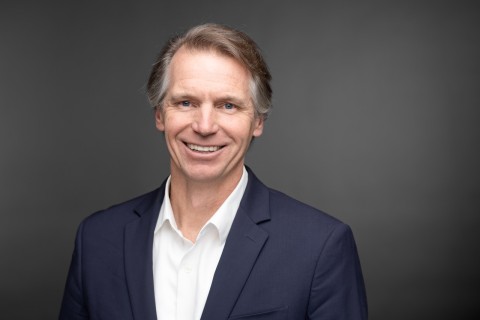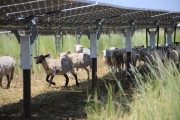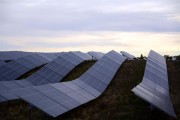What was Premier Ralph Klein thinking when he announced that 50% of Alberta's electricity is produced using "clean coal"?
According to the Canadian Clean Power Coalition, "Clean coal technology refers to technology that virtually eliminates air and carbon dioxide emissions from coal-fired power plants." Industry members include EPCOR, ATCO, Luscar Ltd., SaskPower, TransAlta, Nova Scotia Power and others.
Jim Dinning is quoted in the Edmonton Journal on Feb. 18 as saying "And when I say 'clean-burning' I mean zero emissions. Most eliminated and the rest captured."
Is Ralph Klein really confused about what clean coal is?
Let's be very clear: we do not have "clean coal" in Alberta today. Far from it. Our aging coal plants are responsible for over 120,000 tonnes of sulphur dioxide and 78,000 tonnes of NO2 (key contributors to smog and precursors for acid rain), and on the order of 50 million tonnes of climate-change-causing greenhouse gases (almost 25% of Alberta's total emissions).
In addition, recent research published in the Journal of Paleolimnology by Dr. Donahue and Dr. Schindler identifies "coal-fired power plants as dominant sources" of trace metals in Wabamun Lake where four coal plants exist within a 35 km radius. Even Alberta's newest coal plant, the Genesee Project III, an improvement over old technology, is far from being an emission-free, clean-coal operation. The provincial government should know that "clean coal" is not just the simple act of burning coal with lower sulphur content.
Clean coal is and should be defined as the use of coal to produce electricity or heat, which results in zero emissions to the atmosphere.
Technology that comes close to this does exist — through the process of coal gasification with the resulting emissions captured and stored underground. Such plants are operating in Europe and the U.S. The Pembina Institute is completing a technical evaluation of clean-coal technologies to better understand their potential advantages and limitations. Certainly there is no free lunch — such plants are energy intensive and burning more coal for the same electrical output and impacts to land and water bodies due to coal mining remains of concern. The technology also requires the development of expensive pipeline infrastructure to transport emissions to a suitable underground reservoir, along with further research to address potential impacts of the entire system.
It is a real shame that our provincial government does not seem to know what clean coal is. This is symbolic of a much greater concern Albertans should have — the absence of any kind of provincial vision or strategy for the development and use of our energy resources. People now understand that our existing carbon-based energy system is the driver for many of the world's social and ecological problems (think high energy prices, wars in the Middle East, urban pollution and climate change).
With its abundant renewable and non-renewable resources, nature has endowed Alberta as an energy powerhouse, yet we have no plan to mobilize our equally strong intellectual and financial resources to move towards a clean energy future. Now is the time for Alberta to develop and execute the policies required to promote the rapid expansion of zero emission energy systems. Clean coal has a role to play but should only be considered within a provincial energy strategy balancing energy efficiency, conventional resources and renewable energy. Our strategy should include world-class research, development and deployment of renewable energy. In the 1990s, the province set, and in 2004 exceeded, a target for the development of the oilsands, yet we have no targets for energy efficiency or renewable energy.
Alberta should not only participate in sustainable energy but should be a leader in its advancement. But we're not going to get there unless we truly understand where we are today and where we need to go. Alberta's coal resources were formed some 300 million years ago during the age of the dinosaurs. Now is the time to start thinking about, planning, and investing for the future of Alberta; otherwise we risk a similar fate as those same dinosaurs.
Dr. Marlo Raynolds is the Executive Director of the Pembina Institute, an Alberta based non-profit environmental research, education, consulting and advocacy organization.







